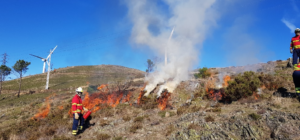LIVING LABS
FIRE-RES will test, deploy and implement its innovations in 11 Living Labs and then upscale them at wider levels.
WHAT ARE LIVING LABS?
Living Labs are open innovation ecosystems. These ecosystems can foster the collaboration among the public sector, scientific communities, private companies and citizen associations.
FIRE-RES will develop 11 Living Labs to demonstrate and deploy its innovations in collaboration with local and regional actors.
OUR LIVING LABS

Bulgaria
CONTEXT In Bulgaria, about one third of the territory is forests and mainly State-owned (76%). On average, Bulgaria experiences 600 forest fires annually that affect 10,000 hectares and cause 2.5

Canary Islands- Spain
CONTEXT Canary Islands is one of the 17 Autonomous Regions in Spain, conformed by 8 main islands. The Islands suffer from devastating and threatening forest fires mostly caused by humans.

Catalonia-Spain
CONTEXT Catalonia is a Mediterranean region of approximately 32,000 km2 located in North Eastern Spain. This region is very densely populated. With 232 inhabitants per km2 in 2016, it is

Chile
CONTEXT The Living Lab Chile comprises the entire Biobio Region. It has a very diverse composition not just at a landscape level but also at an anthropogenic level, with 2

Galicia – Spain
CONTEXT In Galicia, the number of forest fires went from approximately 10,000 per year in the decade 1990-2000 passing through to 7,000 forest fires per year in 2000-2010 and down to

Germany-The Netherlands
CONTEXT Fire regimes are changing around the world, and the knowledge generated on these changes and how to deal with them is very often dispersed. This is because of the

Greece
CONTEXT FIRE-RES solutions will be applied in three fire-prone areas across Greece: Kassandra Peninsula (Chalkidiki) – Lesvos Island (Aegean Sea) – Peloponnese (Region). These areas are characterized by wildland-urban interface

Norway-Sweden
CONTEXT Norway and Sweden are characterized by boreal and hemiboreal forest, as well as alpine forest towards the north and in the mountain regions. The boreal and hemiboreal regions typically

Nouvelle Aquitaine- France
CONTEXT In the Nouvelle-Aquitaine region, megafires have been a relevant issue since the mid-20th century. To this day, a set of fires which occurred between 1946 and 1949, burning approximately

Portugal
CONTEXT The Portuguese Living Lab extends over two case study areas. The first is a forested landscape in Vale do Sousa that extends over 14316 ha. Eucalypt and maritime pine

Sardinia- Italy
CONTEXT For the Living Lab in Sardinia, FoReSTAS will support the set-up of two field trials on its premises, in two areas: Porto Conte-Alghero, Sassari, and Monte Arci -Usellus, Oristano.